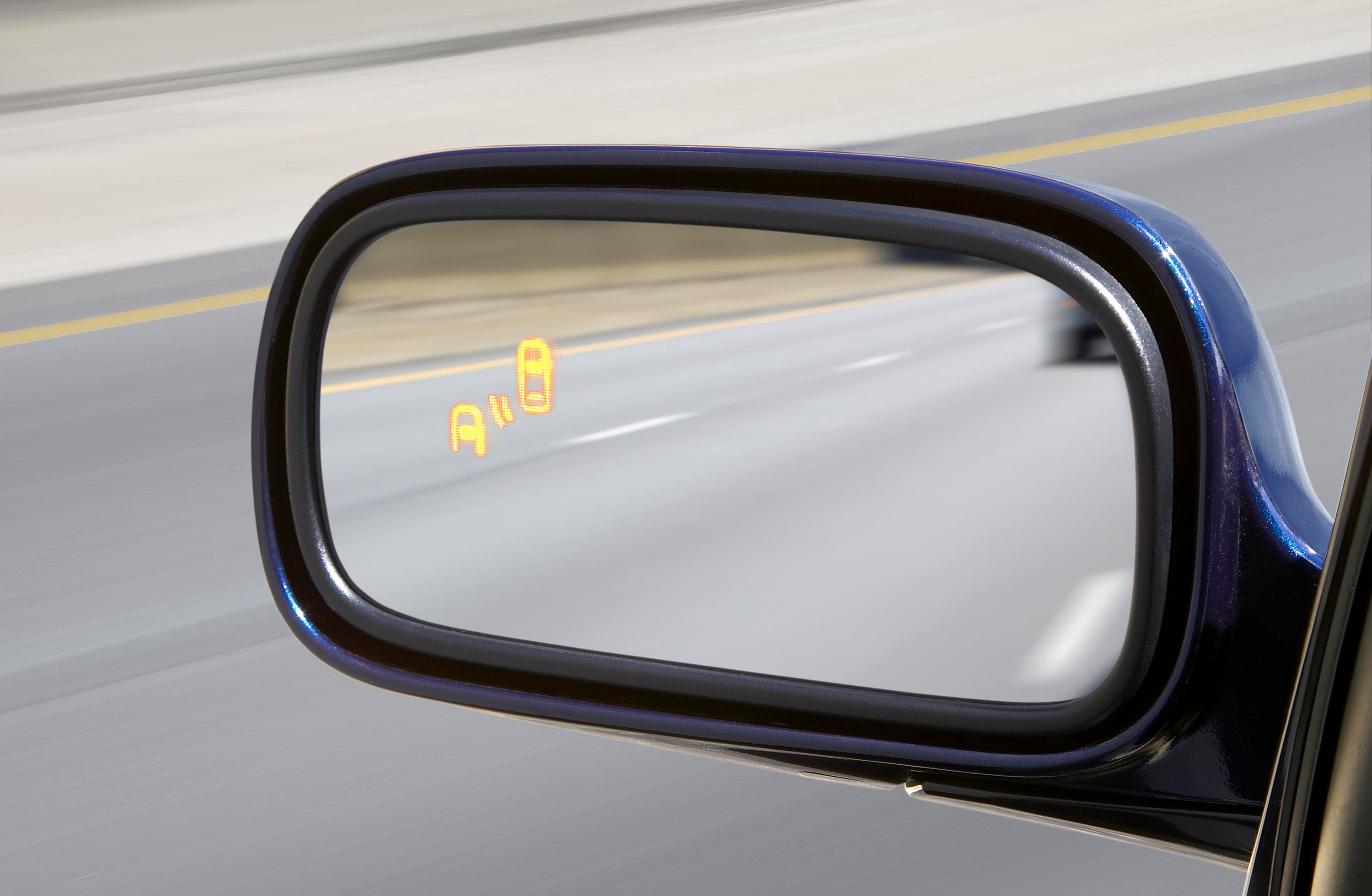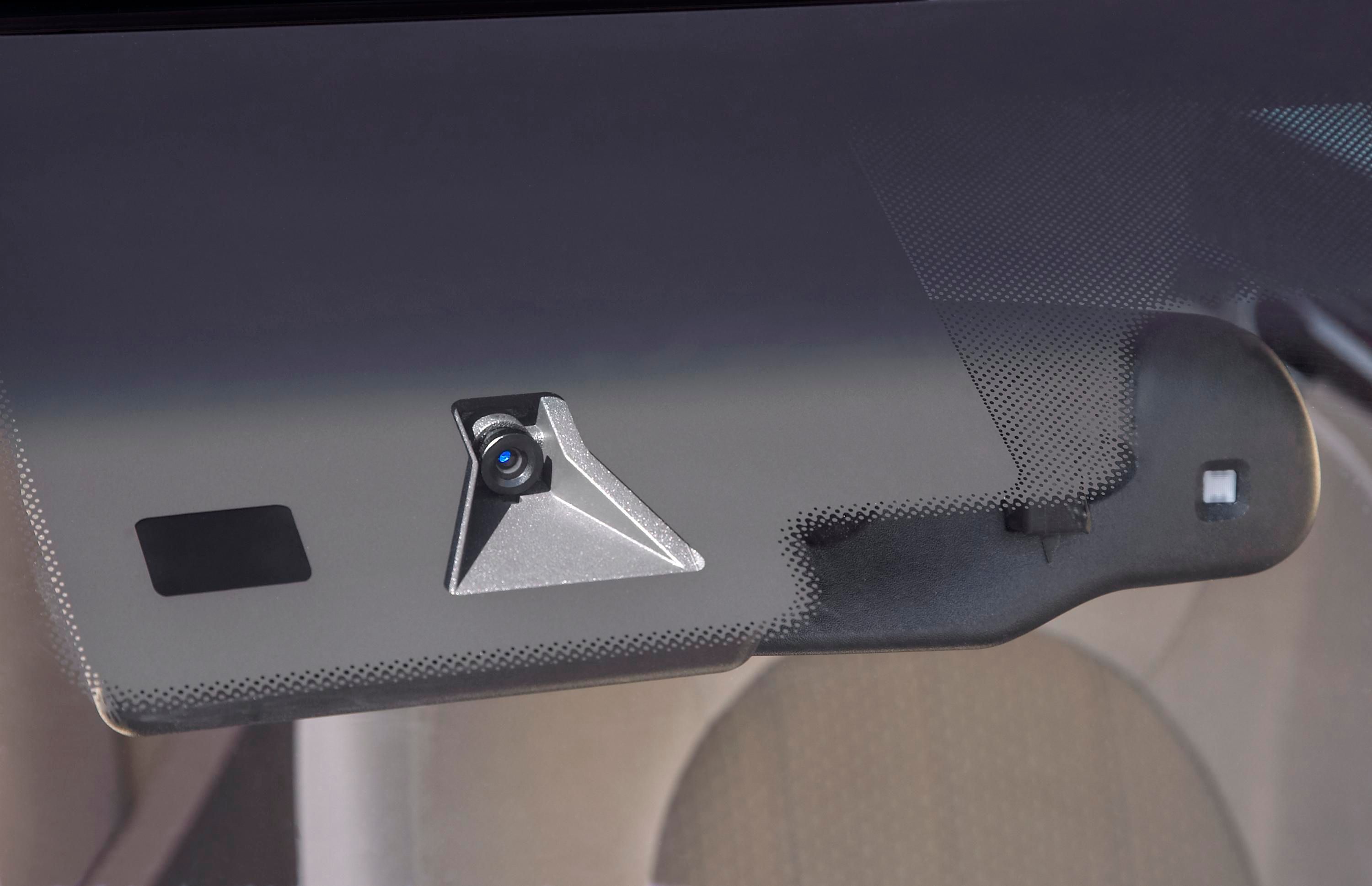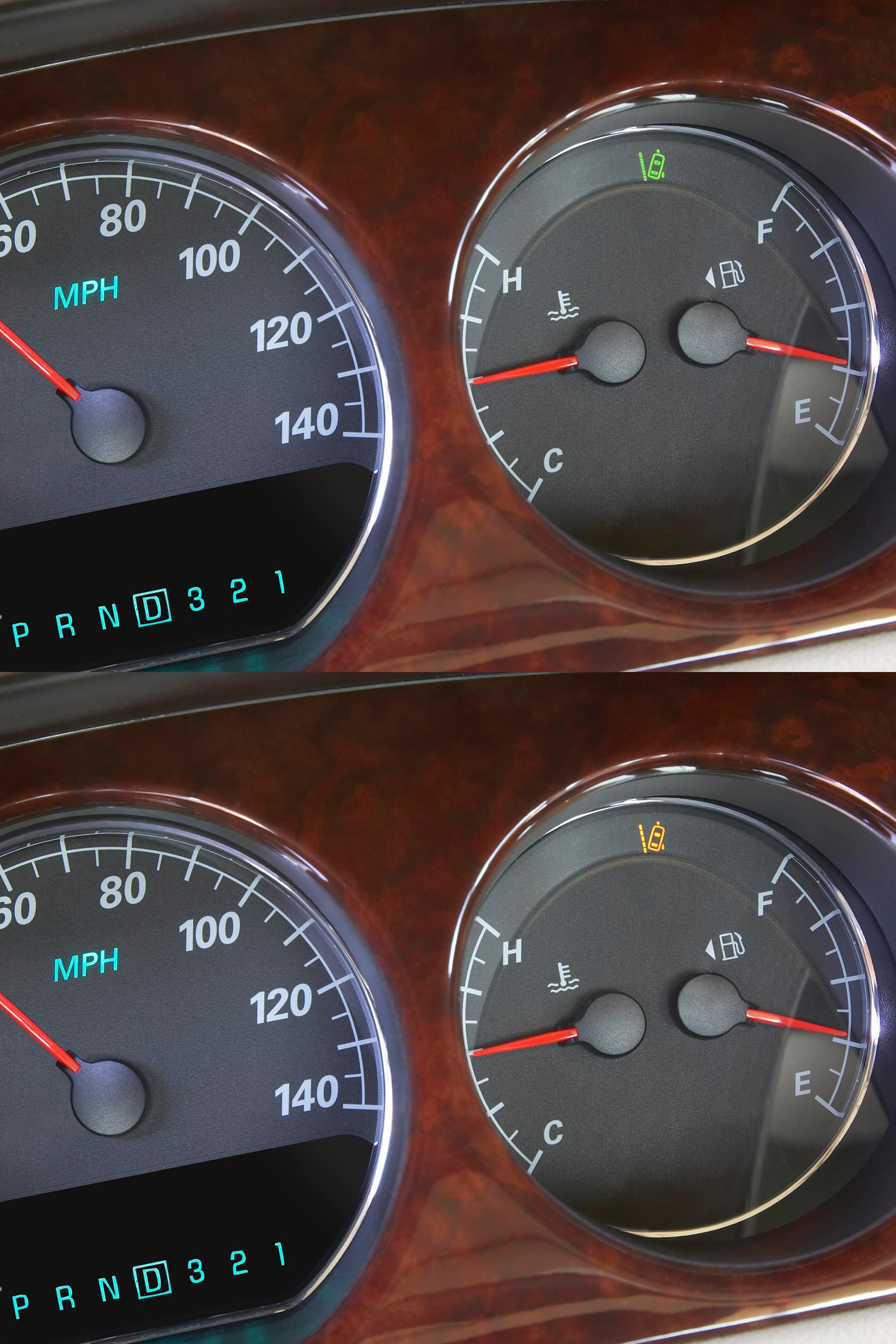Buick will offer two new safety-enhancing technologies that could serve as an extra set of “eyes” for drivers, helping them to avoid a collision caused by an inadvertent lane change or by colliding with a vehicle in the side blind spot while changing lanes. The technologies will be available on all 2008 Buick Lucerne sedan models this summer.
The General Motors Lane Departure Warning (LDW) and Side Blind Zone Alert (SBZA) systems continue Buick’s mission of adding advanced but easy-to-use technologies that offer occupants peace of mind while driving.
The lane departure system uses a camera located between the inside rearview mirror and the windshield to detect lane markings on the road and alert drivers when they inadvertently stray from the lane. The side blind zone system uses radar sensors behind the rear fascia on both sides of the vehicle. It is designed to help drivers avoid lane-change crashes with vehicles in the side blind zone. (The same technology behind the Buick systems will be featured on the 2008 Cadillac STS and DTS sedans.)
“GM’s Lane Departure Warning and Side Blind Zone Alert systems aren’t a substitute for safe, careful driving, but they show tremendous potential to reduce certain kinds of crashes,” said Buick-Pontiac-GMC General Manager John Larson. ”They have been tested extensively with great success.”
Lane Departure Warning System
When GM’s Lane Departure Warning System is engaged, a driver traveling at 35 mph or more who crosses a detected lane marking without signaling is alerted in two ways: The system’s flashes an amber indicator light located in the fuel gauge of the Lucerne ’s instrument panel, and an alerting chime of three beeps is played. The system does not steer the vehicle; it is designed only to alert drivers so they can take appropriate action to move the vehicle back into the lane.
According to the National Highway Traffic Safety Administration, nearly 200,000 car crashes a year happen due to automobiles leaving their lanes. The causes range from driver distraction to driver fatigue. A Lane Departure Warning system alerts a driver when he’s leaving his lane without signaling. A recent University of Michigan Transportation Research Institute-led study also revealed that lane departure warning systems can help drivers do a better job of staying in their lanes and promote greater use of turn signals.
“Active safety is one of the emerging automotive technologies we see in vehicles today. Active safety are products that prevent crashes or minimize damage to the vehicles and increase safety to the passenger in unavoidable crashes,” said Charlie Vogelheim, vice president, J.D. Power and Associates.
Larson said a distinguishing feature of Buick’s lane departure system over competitive systems is an indicator light with the LDW symbol that indicates whether the system is ready to assist the driver. If the light is green, the system is able to detect lane markings and provide alerts. If the light is off, it will not.
To avoid nuisance alerts, the system is deigned to not provide an alert if the turn signal is on or if the driver makes a sharp maneuver.
Side Blind Zone Alert System
For many reasons, it often can be difficult for a driver to see vehicles in the side blind zone. Alternating radar beams in GM’s Side Blind Zone Alert System sweep adjacent lanes of traffic, covering a zone of about one lane over from both sides of the vehicle, or 11 feet (3.5 m). The zone starts at each side mirror and goes back about 16 feet (5 m).
When the system is engaged, a driver will know that following vehicles in the adjacent lanes are entering their side blind zone when an amber symbol, located in the outside rearview mirror, is illuminated.
The system is not designed to detect vehicles outside of the side blind zone that may be rapidly approaching, or detect pedestrians, bicyclists or animals. It’s designed to ignore infrastructure such as fire hydrants or parked cars. In addition, the system displays do not come on while the vehicle is approaching or passing other vehicles.
Both the LDW and SBZA systems can be turned on and off by the driver.
“These are easy-to-use, easy-to understand technologies that will benefit our customers and the driving public, and you won’t have to spend thousands of dollars on a high-end luxury car to benefit from these technologies,” Larson said.
Lane Departure Warning and Side Blind Zone Alert systems join the Lucerne ’s growing list of safety technologies to help protect occupants before, during and after a crash.
Some include a front passenger dual depth air bag that deploys in two shapes and pressures based on the severity of the crash, seat position and seat belt use; Magnetic Ride Control for increased vehicle control and tire contact with the road surface; StabiliTrak electronic stability control with brake assist, which senses emergency braking situations and boosts the power as needed; and OnStar’s Advanced Automatic Crash Notification (AACN) system, making crash data available to participating 911 centers to help them dispatch the appropriate life-saving personnel and equipment to crash scenes faster.
Lane Departure Warning and Side Blind Zone Alert systems are available together as an optional upgrade to Lucerne ’s Driver Confidence Package, which includes remote start, rear park assist, heated washer fluid, StabiliTrak and rain-sensing windshield wipers. Both technologies are available in the U.S. and Canada . Pricing for each has not been announced.



